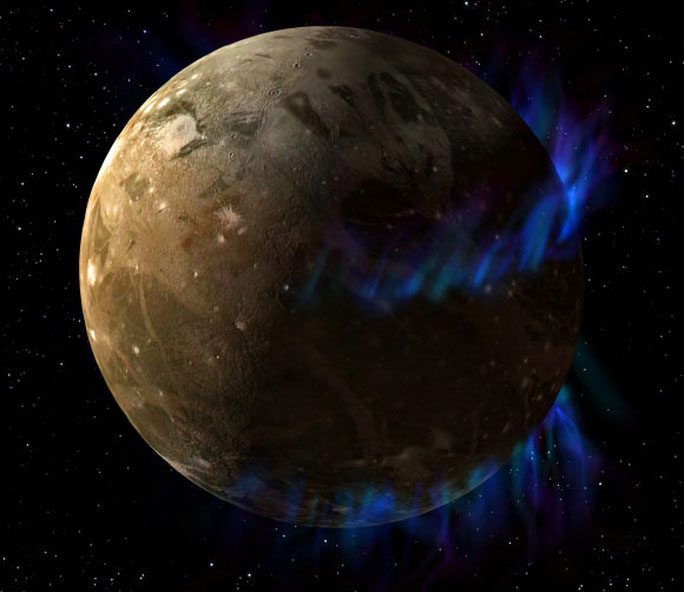The Hubble Space Telescope has discovered water vapor in the atmosphere of a moon of Jupiter, where NASA had previously suspected the existence of subsurface oceans and potential life.
Ganymede, the largest moon in the Solar System, has surprised scientists with new evidence of water vapor in its atmosphere, a rare occurrence for a world with such extremely cold temperatures: -185 degrees Celsius.
According to Sci-News, the credit for this discovery belongs to NASA/ESA’s Hubble Space Telescope (National Aeronautics and Space Administration and European Space Agency).

Ganymede with Stunning Auroras – (Photo: NASA).
According to Dr. Lorenz Roth from the Royal Institute of Technology KTH, since 1998, Hubble’s STIS instrument has been transmitting the first ultraviolet images of Ganymede, showing auroral bands similar to those on Earth, indicating that it possesses a magnetic field similar to that of a planet, despite being merely a moon of Jupiter. Efforts to find evidence of molecular oxygen dispersed on the moon as a component of sublimated water have not been successful.
In a newly published study in Nature Astronomy, advanced data from Hubble’s Cosmic Origins Spectrograph (COS) has been combined with older data, revealing no atomic oxygen in Ganymede’s atmosphere. Instead, water vapor appears near the equator at midday, possibly due to the sublimation of ice, as Ganymede’s surface can warm enough at noon to release small amounts of water molecules.
While water vapor alone is not a sufficient condition for extraterrestrial life to arise, it suggests that a more temperate environment than previously imagined could exist on this strange moon. Previously, NASA believed that beneath its icy crust lies a much warmer ocean world, heated by tidal forces.
The group of four large moons of Jupiter—Ganymede, Europa, Triton, and Io—are all thought to have factors that could foster the emergence of life and strong tidal forces to warm subsurface oceans. However, Io is deemed less likely to support life due to its intense volcanic activity, rendering it a hellish environment.
Ganymede is not only the largest moon of Jupiter but also the largest moon in the Solar System, even larger than Mercury.




















































